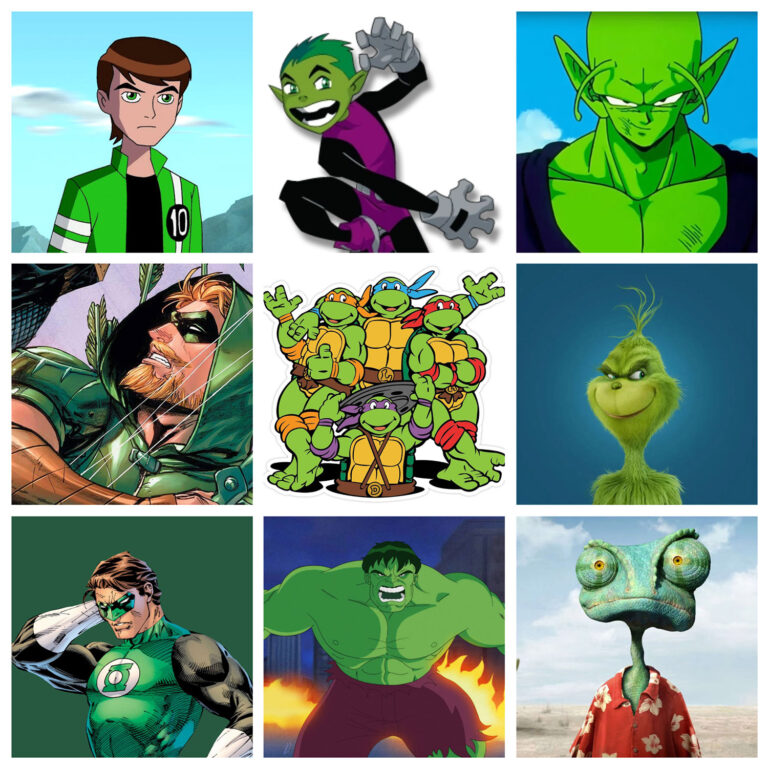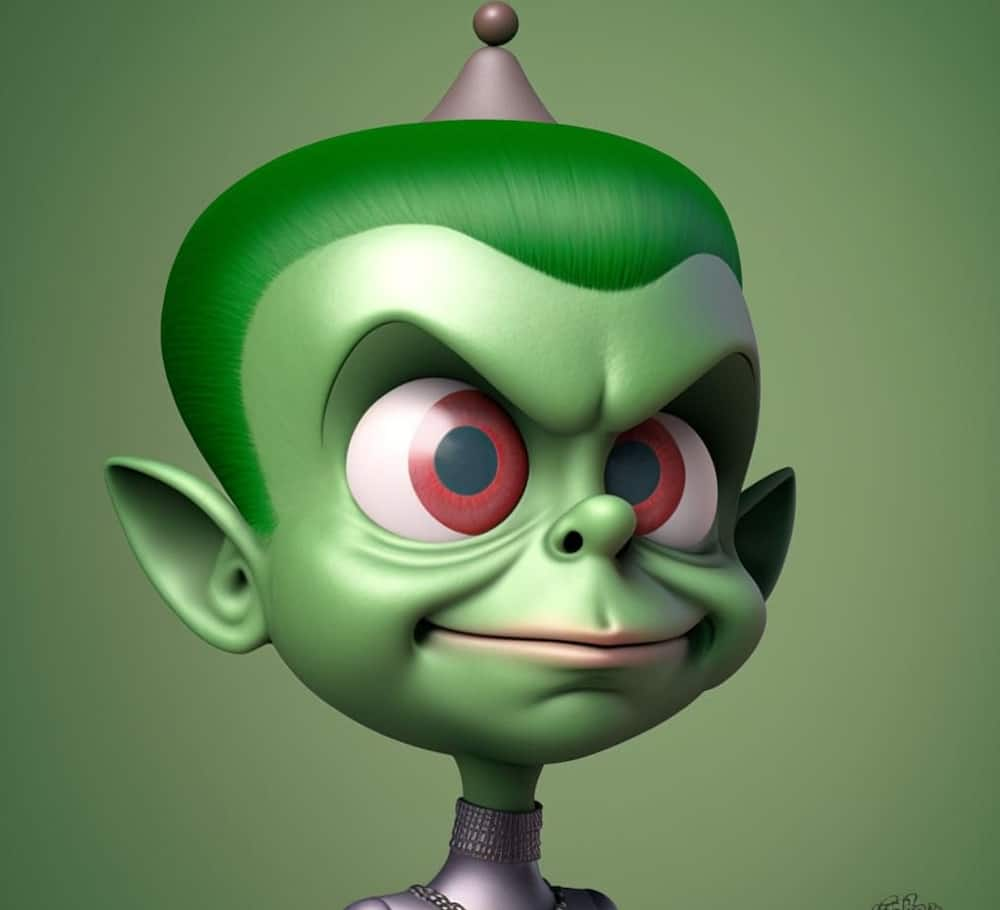Top Green Cartoon Characters: From Shrek To Yoda
Why does the color green, so often associated with envy, represent some of the most beloved characters in animation history? Because in the world of cartoons, green signifies anything but jealousy. It represents vibrancy, otherworldly charm, and a touch of the extraordinary. From the slimy to the sublime, green characters have captured our imaginations for decades, proving that being green can be quite appealing.
Green characters occupy a unique space in animation. They challenge conventional color palettes, often defying typical human or animal representations. This allows creators to explore imaginative designs and personalities, pushing the boundaries of character development. Consider the sheer diversity: heroic figures like Green Lantern, mischievous tricksters like the Grinch, and lovable ogres like Shrek. Each embodies a different facet of green's symbolic potential.
| Character | Origin | Notable Traits | Cultural Impact |
|---|---|---|---|
| Shrek | DreamWorks' Shrek (2001) | Grumpy but lovable ogre, defies fairytale conventions | Redefined the fairytale genre, spawned sequels and merchandise |
| Kermit the Frog | Jim Henson's The Muppet Show | Earnest, often exasperated leader of the Muppets | Beloved childhood icon, represents sincerity and humor |
| Green Lantern | DC Comics | Intergalactic superhero powered by a green ring | Embodies willpower and courage, popular in comics and film |
| Yoda | Star Wars franchise | Wise Jedi Master, speaks in unconventional syntax | Symbol of wisdom and patience, iconic cinematic figure |
| Gamora | Marvel Comics' Guardians of the Galaxy | Fierce warrior, adopted daughter of Thanos | Complex anti-hero, popular in comics and film |
List of fictional characters with green skin - Wikipedia
The evolution of green characters reflects broader trends in animation. Early cartoons, often limited by technical constraints, rarely featured green characters prominently. As animation techniques advanced, the use of color expanded, allowing for greater creativity and diversity. Characters like Cecil Turtle from Looney Tunes, though not entirely green, paved the way for more vibrant green characters to emerge. The rise of CGI animation further opened up possibilities, as seen in the intricate detail of Shrek's swampy complexion.
Superman's vulnerability to kryptonite, a glowing green rock, also reinforces the color's power. While not a character itself, kryptonite represents a significant narrative element, highlighting green's potential for both harm and healing. This duality adds depth to the color's symbolism, suggesting that even the brightest green can hold hidden dangers. The Hulk's transformations, triggered by rage, also link green with intense emotions and primal power.
From the mischievous Tinkerbell to the formidable Green Goblin, green characters occupy diverse roles across animation. They can be heroes, villains, sidekicks, or comedic relief. This versatility demonstrates the color's adaptability, allowing it to represent a wide range of personalities and archetypes. The enduring popularity of these characters suggests a deep-seated fascination with the color green, proving its ability to evoke strong emotional responses in audiences.
The prevalence of green aliens and monsters further underscores the color's association with the otherworldly. Characters like Slimer from Ghostbusters and various creatures from the Star Wars universe capitalize on green's ability to evoke the strange and unknown. This connection to the fantastical allows animators to create visually striking and memorable characters that stand out from more conventional designs.
Beyond the visual appeal, green characters often carry symbolic weight. Green can represent nature, growth, and renewal, as seen in characters like Poison Ivy. It can also represent greed and corruption, as embodied by villains like Lex Luthor in his iconic green and purple suit. This range of meanings allows for complex character development, adding layers of interpretation and depth to the narrative.
The enduring popularity of green cartoon characters is a testament to their unique appeal. They challenge conventional character design, offer diverse representations, and often carry symbolic weight. From the whimsical to the menacing, green characters have earned their place in animation history, proving that being green is anything but ordinary.



Detail Author:
- Name : Madyson West
- Email : carmella.schneider@stoltenberg.com
- Birthdate : 1995-09-11
- Address : 31055 Sunny Land Suite 046 Bernierview, TN 83783-4652
- Phone : +14359315177
- Company : Lehner-Mraz
- Job : Architect
- Bio : Impedit quo labore quae recusandae voluptatem. Velit maxime officiis tenetur recusandae delectus recusandae.